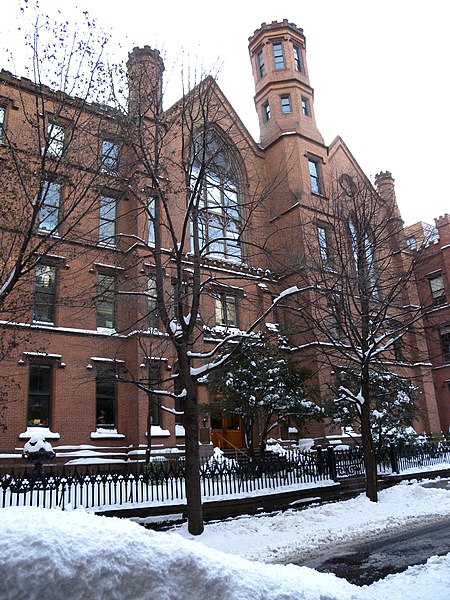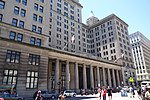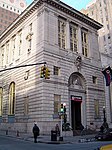Packer Collegiate Institute
1845 establishments in New York (state)Educational institutions established in 1845Preparatory schools in New York CityPrivate K-12 schools in New York CityPrivate elementary schools in Brooklyn ... and 3 more
Private high schools in BrooklynPrivate middle schools in BrooklynUse mdy dates from December 2018

The Packer Collegiate Institute is an independent college preparatory school for students from pre-kindergarten through grade 12. Formerly the Brooklyn Female Academy, Packer has been located at 170 Joralemon Street in the historic district of Brooklyn Heights neighborhood of Brooklyn, New York City since its founding in 1845.
Excerpt from the Wikipedia article Packer Collegiate Institute (License: CC BY-SA 3.0, Authors, Images).Packer Collegiate Institute
Joralemon Street, New York Brooklyn
Geographical coordinates (GPS) Address Phone number Website External links Nearby Places Show on map
Geographical coordinates (GPS)
| Latitude | Longitude |
|---|---|
| N 40.6922 ° | E -73.9924 ° |
Address
Packer Collegiate Institute
Joralemon Street 170
11201 New York, Brooklyn
New York, United States
Open on Google Maps








